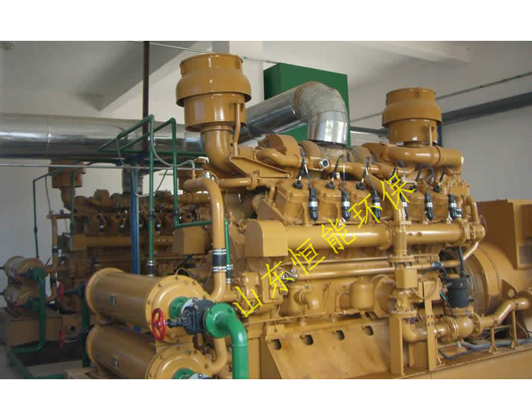目前,煙氣脫硫脫硝處理技術(shù)多種多樣,包括PAFP.ACFP.軟錳礦法.電子束氨法.脈沖電暈法.石膏濕法.催化氧化法.微生物降解法等技術(shù),其中濕法煙氣脫硫脫硝快、常見。
At present, there are various technologies for flue gas desulfurization and denitrification, including PAFP ACFP, pyrolusite method, electron beam ammonia method, pulse corona method, gypsum wet method, catalytic oxidation method, microbial degradation method and other technologies, among which wet flue gas desulfurization and denitrification are fast and common.
常見的煙氣脫硫方法包括干式脫硫和濕式脫硫。干式脫硫是利用催化劑和吸收劑去除煙氣中的二氧化硫。不同的催化劑和吸附劑也有不同的作用。更廣泛使用的吸收劑類型是氧化物和活性炭。雖然干式脫硫是有效的,但由于不能回收,吸收成本高。濕式脫硫和干式脫硫均采用高效液體吸收劑。石灰石和海水脫硫是濕式脫硫的主要操作方法。因此,我國(guó)絕大多數(shù)企業(yè)都使用濕式脫硫進(jìn)行相關(guān)操作。
Common flue gas desulfurization methods include dry desulfurization and wet desulfurization. Dry desulfurization is the use of catalysts and absorbents to remove sulfur dioxide from flue gas. Different catalysts and adsorbents also have different effects. The more widely used types of absorbents are oxides and activated carbon. Although dry desulfurization is effective, it cannot be recovered and has high absorption costs. Both wet and dry desulfurization use high-efficiency liquid absorbents. Limestone and seawater desulfurization are the main operating methods of wet desulfurization. Therefore, the vast majority of enterprises in China use wet desulfurization for related operations.

濕法煙氣脫硫技術(shù)有很多優(yōu)點(diǎn):濕法煙氣脫硫技術(shù)是氣液反應(yīng),反應(yīng)速度快,脫硫效率高,一般高于90%,技術(shù)成熟,應(yīng)用廣泛。濕法脫硫技術(shù)相對(duì)成熟,生產(chǎn)運(yùn)行安全可靠,在眾多脫硫技術(shù)中始終占據(jù)主導(dǎo)地位。
Wet flue gas desulfurization technology has many advantages: wet flue gas desulfurization technology is a gas-liquid reaction, with fast reaction speed and high desulfurization efficiency, generally higher than 90%. The technology is mature and widely used. Wet desulfurization technology is relatively mature, safe and reliable in production and operation, and has always occupied a dominant position among numerous desulfurization technologies.
煙氣處理后,將煙氣加熱到350~400攝氏度,然后進(jìn)入選擇性催化還原反應(yīng)器,是國(guó)外公司開發(fā)的濕洗脫硫脫硝技術(shù)的主要工藝,可將有害氮化物轉(zhuǎn)化為無(wú)害氮。
After flue gas treatment, the flue gas is heated to 350-400 degrees Celsius and then enters a selective catalytic reduction reactor. This is the main process of wet washing desulfurization and denitrification technology developed by foreign companies, which can convert harmful nitrogen compounds into harmless nitrogen.
目前,空氣加熱器也是常用的煙氣加熱器。循環(huán)風(fēng)道加熱器主要用于風(fēng)道內(nèi)的空氣加熱。循環(huán)風(fēng)道加熱器的規(guī)格分為低溫、中溫和高溫。循環(huán)風(fēng)道加熱器在結(jié)構(gòu)上的共同點(diǎn)是,采用鋼板支撐循環(huán)風(fēng)道加熱器,以減少風(fēng)機(jī)停止時(shí)循環(huán)風(fēng)道加熱器的振動(dòng)。低溫型可直接安裝在循環(huán)風(fēng)道加熱器上,而中溫型可直接安裝在循環(huán)風(fēng)道加熱器上。由于高溫型結(jié)構(gòu)不同,通道外壁至加熱器接線盒夾有保溫材料。一方面,它減少了整個(gè)循環(huán)風(fēng)道加熱器通道的外部散熱,另一方面,它也降低了接線腔內(nèi)的溫度。
At present, air heaters are also commonly used flue gas heaters. The circulating air duct heater is mainly used for heating the air inside the air duct. The specifications of the circulating air duct heater are divided into low temperature, medium temperature, and high temperature. The common structural feature of the circulating air duct heater is that it uses steel plates to support the circulating air duct heater, in order to reduce the vibration of the circulating air duct heater when the fan stops. The low-temperature type can be directly installed on the circulating air duct heater, while the medium temperature type can be directly installed on the circulating air duct heater. Due to different high-temperature structures, insulation materials are sandwiched between the outer wall of the channel and the heater junction box. On the one hand, it reduces the external heat dissipation of the entire circulating air duct heater channel, and on the other hand, it also reduces the temperature inside the wiring chamber.
